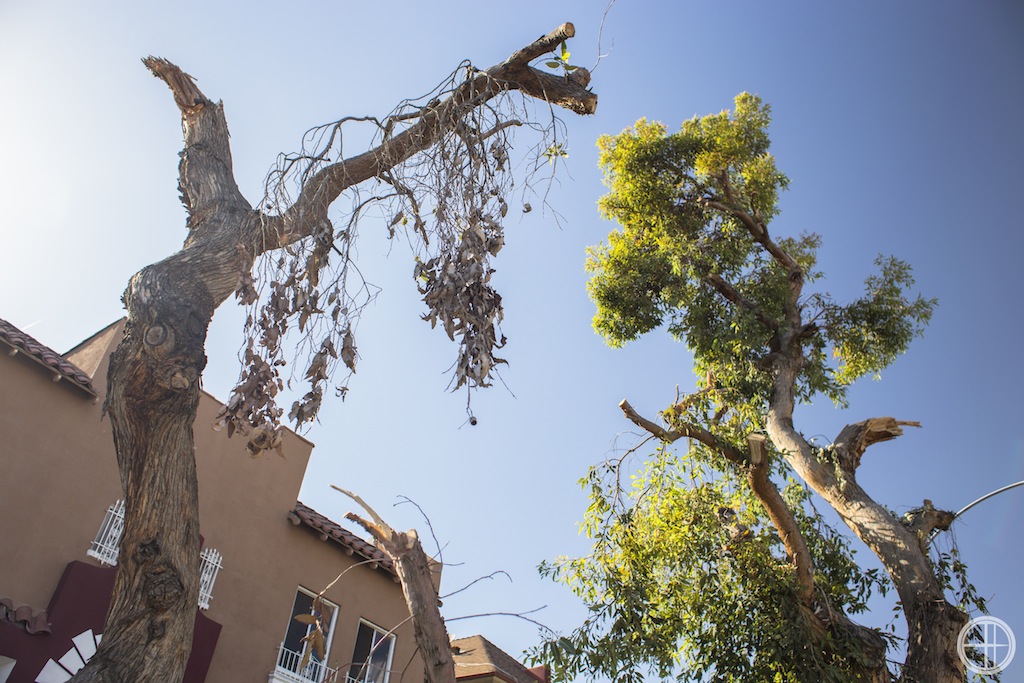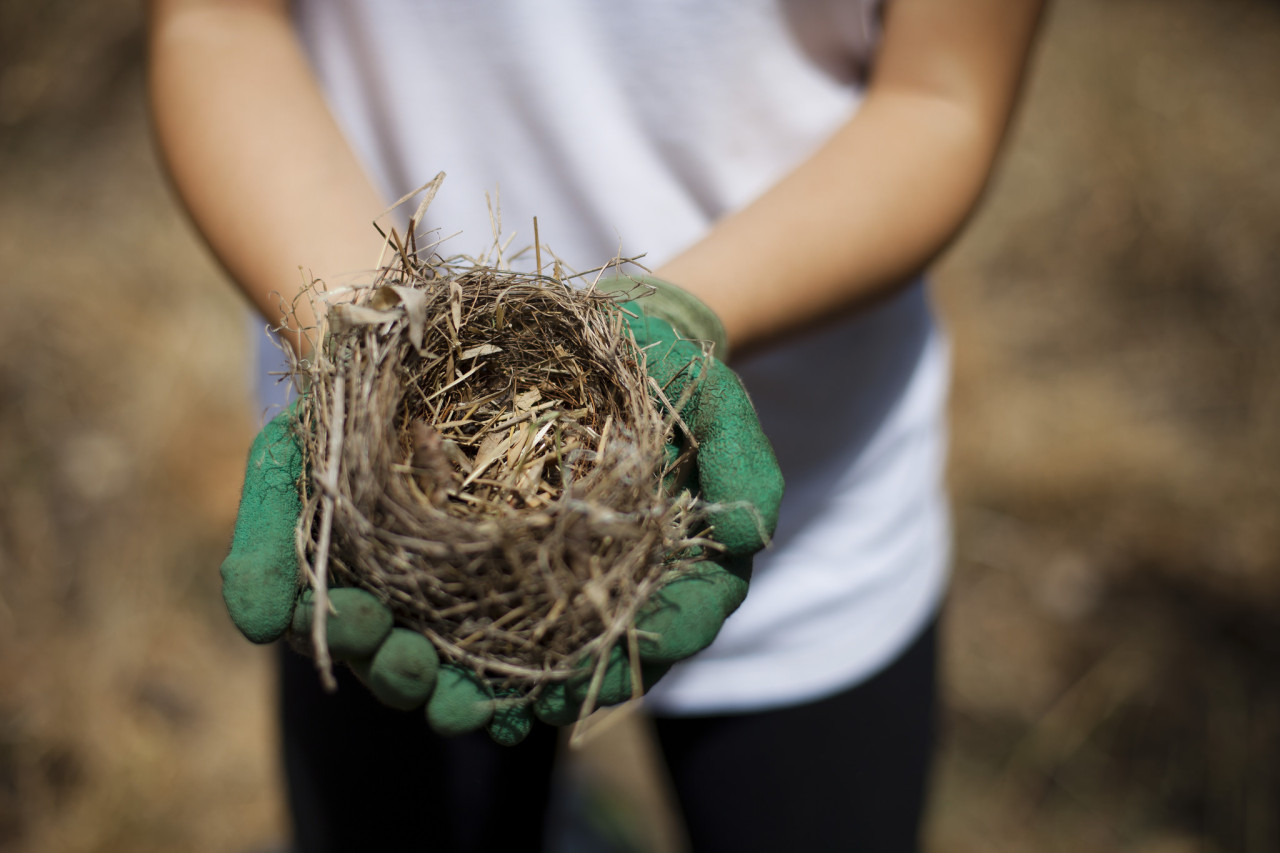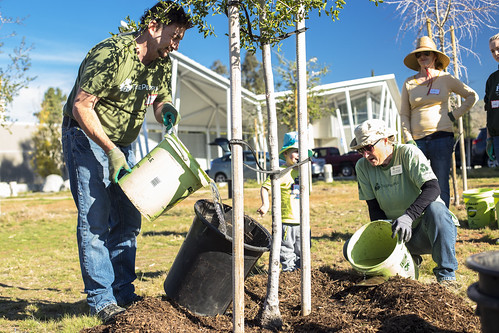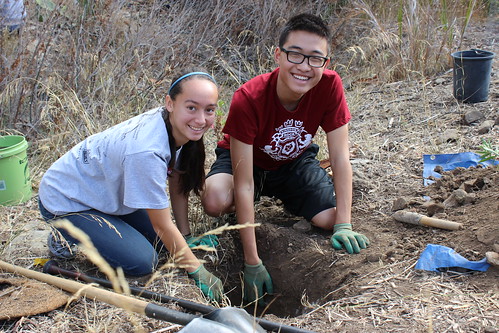An Urgent Arbor Day Message from TreePeople Founder and President, Andy Lipkis
As I drive through LA this beautiful spring my heart is breaking. In every street, in every block, I see trees in decline.
This is a quiet crisis, and it’s accelerating.

Earlier this month I sat in a presentation by the Urban Forester of Santa Monica. He said that after four years of drought, our trees’ ability to take up water has atrophied, especially in trees not native to our region. Whereas in past years many trees have been struggling but surviving, it’s now reached the point where they’re dying. We’re in a critical time for saving LA’s trees.
What many of LA’s declining trees need is emergency watering. Taxpayer dollars have paid for millions of trees to be planted in our region over the decades, trees that have been repaying us many times over by providing precious tree canopy. Many of these trees may be lost.
This not only means a loss of this investment. It also means a loss of beauty, wildlife habitat, oxygen, air-cleaning, water-cleaning, carbon-absorbing, health-providing services to Angelenos. But even more is at stake: this loss of trees could threaten our very lives.
I learned this vividly on a recent tour of Australia, a country that has seen record-breaking heat in recent years due to climate change. There, in neighborhoods that were lacking in trees, people were exceptionally vulnerable to the heat. During extreme heat events, people in these unshaded “heat islands” died. (According to the Centers for Disease Control, excessive heat is a leading cause of preventable, weather-related deaths, particularly among the elderly.)
The Australians found that dense tree canopy can save lives and even in their own drought have prioritized the planting and care of trees.
So, in LA’s drought emergency, what does this mean for us?
It means that we while we reduce water for non-essential uses, we must use it to keep our city’s trees alive.
As TreePeople gears up for a major effort to save LA’s trees, tapping the power and caring of Angelenos of all ages and backgrounds as well as influencing government policy, you can take action today.
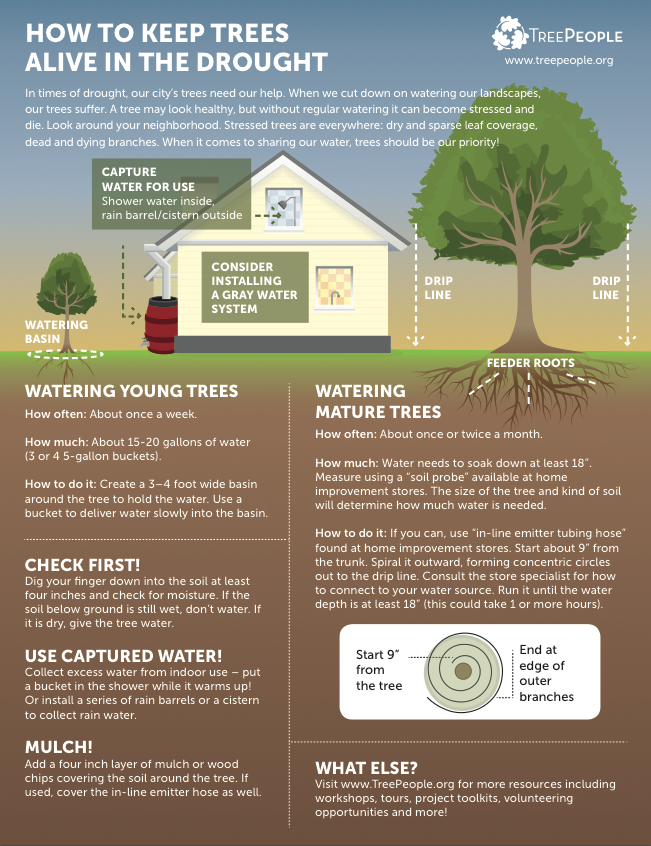
- Learn to water trees properly during the drought.
- Diminish water use in other parts of your landscape to use on your trees – and don’t stop watering your trees if you stop watering your lawn: your trees have been depending on that water. And the good news is that they don’t need that much in comparison with thirsty lawns. Check out TreePeople’s resources on removing your turf and planting with native plants and how to plant the right tree in the right place.
- Prioritize your water uses. Not only can we conserve even more than we already are doing, we can re-use water when we can. Even if you can’t use grey water, you might be able to keep a bucket in your shower and capture the warm-up water to use on your trees. If you have a rain barrel, you can use it to store captured water from other uses.
- Apply mulch. Using a thick layer of shredded tree trimmings helps hold soil moisture in and make the difference between life and death for trees. See our easy “how to” guide.
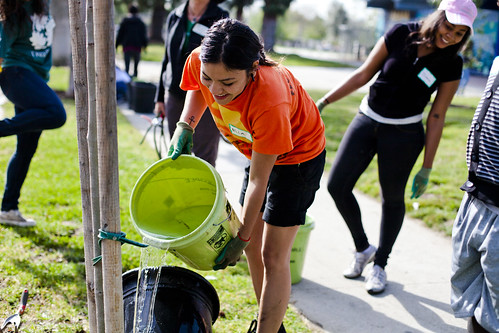
- Identify trees in public spaces that need to be protected and saved. Look beyond your own yard into your community forest. When you look at the tops of trees and see bare stems and branches, that could indicate drought-related distress. Commit to adopting public trees to keep alive during the hot summer months with occasional waterings. Find a hose nearby and ask the owner permission to use the water on the tree. Or bring your own bucket.
- Use TreeMapLA www.treemapla.org to map the trees you are taking care of, and alert others to trees that need help using the alert feature. This powerful new tool can help us keep track of, value, and care for LA’s urban forest.
- Call your city government office and register your concern about dying public trees and ask for this expenditure to be prioritized. The city of Santa Barbara replicated TreePeople’s model of using irricades (a tree-saving innovation we brought back from Australia). This is something your city could do as well to provide recycled water to save mature and heritage trees.
- Support TreePeople. TreePeople is working on all fronts to bolster LA’s ability to respond to this tree emergency. As we lobby for resources from all levels of government, we are gearing up for a major public campaign to give people the information and tools to save trees on a massive scale.
Don’t let LA’s trees become casualties of this drought. Let’s get to work to keep LA’s trees alive.

